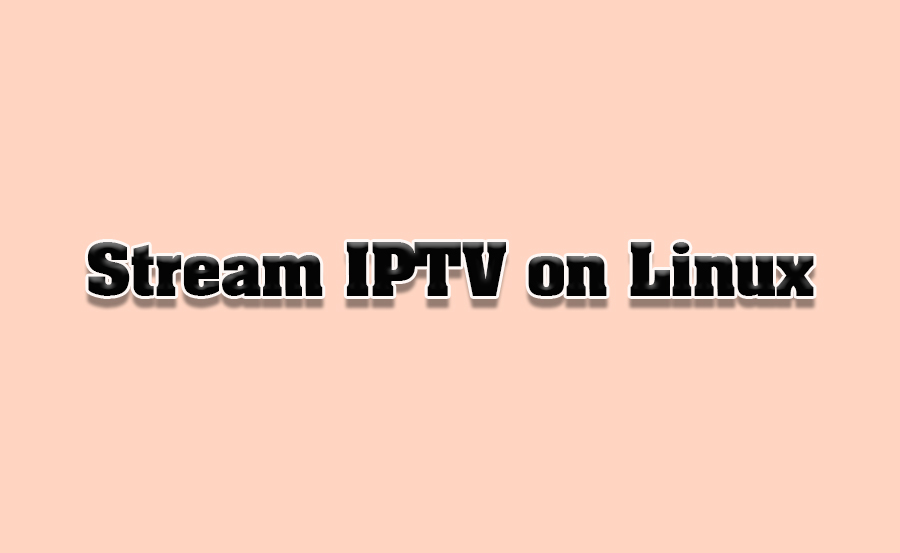Streaming IPTV on Linux-based systems is an excellent option for those who appreciate the stability, flexibility, and security that Linux provides. While Linux is not as commonly associated with IPTV as platforms like Windows or macOS, its open-source nature makes it highly adaptable for IPTV setups. This guide covers everything you need to know to stream IPTV on Linux, from installation to optimization, ensuring a seamless and enjoyable viewing experience.
Buy 1 Year IPTV and Enjoy Unlimited Content
1. Why Choose Linux for IPTV?
Linux is a powerful platform for IPTV streaming, offering numerous benefits:
- Stability: Linux systems are known for their reliability and uptime.
- Flexibility: Highly customizable to suit individual streaming preferences.
- Security: Minimal vulnerability to malware, ensuring a safe IPTV experience.
- Resource Efficiency: Ideal for older hardware due to its lightweight nature.
2. Requirements for Setting Up IPTV on Linux
To start streaming IPTV on Linux, you’ll need the following:
- Linux Distribution: Any popular distro like Ubuntu, Fedora, Debian, or Linux Mint will suffice.
- IPTV Service Subscription: An active IPTV service providing M3U playlist URLs or Xtream Codes.
- Media Player or App: Applications like VLC Media Player, Kodi, or Plex support IPTV streaming.
- Internet Connection: A stable internet speed of at least 5 Mbps for SD and 25 Mbps for HD/4K streaming.
3. Step-by-Step Guide to Streaming IPTV on Linux
Option 1: Using VLC Media Player
- Install VLC:
- Open your terminal and run the following commands:bashCopy code
sudo apt update sudo apt install vlc - Replace
aptwith your distribution’s package manager if not using Ubuntu.
- Open your terminal and run the following commands:bashCopy code
- Load IPTV Playlist:
- Open VLC, navigate to
Media > Open Network Stream, and paste the M3U playlist URL.
- Open VLC, navigate to
- Stream Channels:
- Click
Playto load channels. Use the playlist view to browse available channels.
- Click
Option 2: Using Kodi
- Install Kodi:
- Install Kodi using your package manager. For Ubuntu:bashCopy code
sudo apt update sudo apt install kodi - For other distributions, visit the official Kodi website for installation instructions.
- Install Kodi using your package manager. For Ubuntu:bashCopy code
- Install the PVR IPTV Simple Client:
- Open Kodi, go to
Add-ons > My Add-ons > PVR Clients, and selectPVR IPTV Simple Client.
- Open Kodi, go to
- Configure the Add-On:
- Enter your M3U playlist URL under the add-on settings.
- Restart Kodi to load IPTV channels into the interface.
Option 3: Using Plex
- Install Plex Media Server:
- Download and install Plex from its official website.
- Add IPTV as a Channel:
- Use a compatible IPTV plugin to integrate your playlist.
- Stream Content:
- Access your IPTV channels through the Plex dashboard.
4. Optimizing IPTV Streaming on Linux
Install Necessary Codecs
- Some media formats may require additional codecs. Install them using:bashCopy code
sudo apt install ubuntu-restricted-extras
Enhance Playback Performance
- Enable hardware acceleration in VLC or Kodi for smoother playback.
Secure Your Connection
- Use a VPN to bypass geographical restrictions and protect your streaming activity.
Organize Channels
- Use playlist editors or Kodi’s channel grouping features to organize IPTV channels by category.
5. Troubleshooting Common Issues
Buffering or Lag
- Lower the video resolution in the app settings to match available bandwidth.
- Close background apps consuming internet resources.
Channels Not Loading
- Verify the playlist URL or Xtream Codes credentials with your IPTV provider.
- Restart the app and reconfigure the playlist.
How to Reduce Data Usage While Streaming IPTV
App Crashes
- Ensure you are running the latest version of the media player.
- Update your Linux distribution and related software packages.
6. Advanced Features for IPTV on Linux
Command-Line Streaming
- Use tools like
ffmpegormpvfor lightweight, command-line-based IPTV streaming.
Recording Live TV
- VLC and Kodi allow users to record live streams directly to their devices.
Cross-Device Sync
- Sync your IPTV setup with other devices using shared playlists or cloud-based storage.
7. Benefits of IPTV on Linux
Linux offers unique advantages for IPTV:
- Open Source: Customize apps and settings to suit specific needs.
- Cost-Effective: Utilize existing hardware for IPTV streaming without additional investment.
- Privacy-Focused: With tools like VPNs and secure configurations, Linux ensures better privacy than most systems.
8. Comparing Linux IPTV to Other Platforms
Advantages
- Lightweight and stable, ideal for long streaming sessions.
- Highly customizable and flexible for advanced users.
- Free and open-source software availability.
Limitations
- Steeper learning curve for users unfamiliar with Linux.
- Fewer dedicated IPTV apps compared to Windows or Android.
9. Future Trends in Linux IPTV Streaming
AI-Driven Features
- Smarter content recommendations based on viewing history.
Enhanced PVR Capabilities
- Better scheduling and recording options integrated into Linux apps.
Seamless Cross-Platform Compatibility
- Advanced syncing across devices for a unified viewing experience.
10. Conclusion
Streaming IPTV on Linux-based systems offers a secure, flexible, and efficient way to enjoy a wide variety of content. With tools like VLC, Kodi, and Plex, and by following the setup steps outlined above, you can transform your Linux system into a powerful IPTV hub. Whether you’re a beginner or an advanced user, Linux provides a reliable platform for all your IPTV streaming needs.
Reviewing Family-Friendly IPTV Services with Parental Controls





